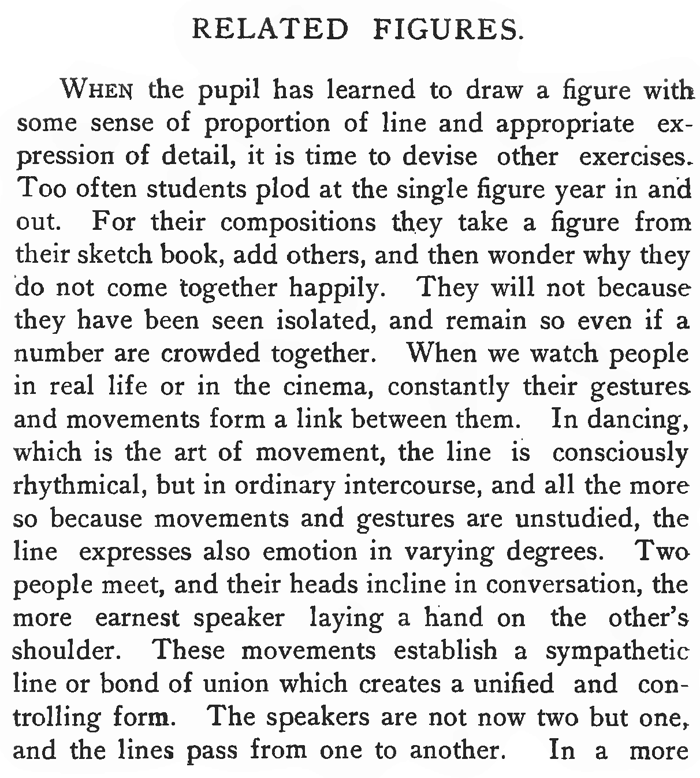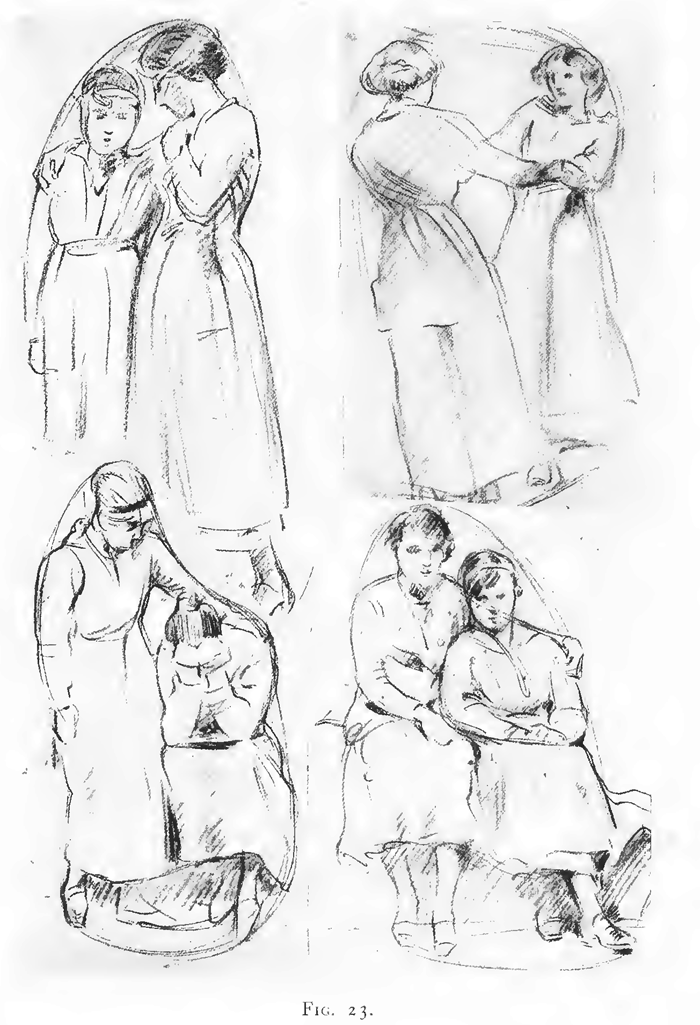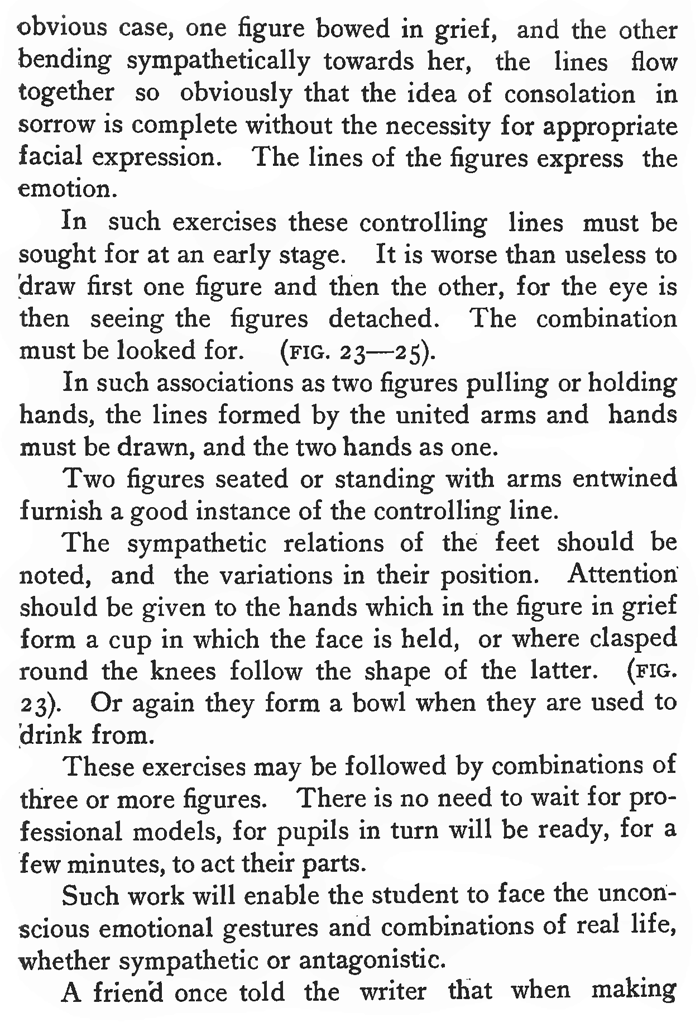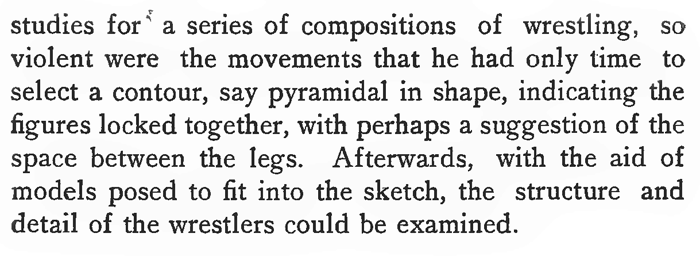Home > Directory of Drawing Lessons > How to Draw People > Drawing Groups of Figures > Drawing Related Human Figures
How to Draw People in Relation to Each Other with the Following Drawing Lesson
|
|
RELATED FIGURES : How to Draw Groups of People / Human Figures
In such exercises these controlling lines must be sought for at an early stage. It is worse than useless to draw first one figure and then the other, for the eye is then seeing the figures detached. The combination must be looked for. (FIG. 23-25). In such associations as two figures pulling or holding hands, the lines formed by the united arms and hands must be drawn, and the two hands as one. Two figures seated or standing with arms entwined furnish a good instance of the controlling line. The sympathetic relations of the feet should be noted, and the variations in their position. Attention should be given to the hands which in the figure in grief form a cup in which the face is held, or where clasped round the knees follow the shape of the latter. (FIG. 23). Or again they form a bowl when they are used to drink from. These exercises may be followed by combinations of three or more figures. There is no need to wait for professional models, for pupils in turn will be ready, for a few minutes, to act their parts. A friend once told the writer that when making studies for a series of compositions of wrestling, so violent were the movements that he had only time to select a contour, say pyramidal in shape, indicating the figures locked together, with perhaps a suggestion of the space between the legs. Afterwards, with the aid of models posed to fit into the sketch, the structure and detail of the wrestlers could be examined.
|









